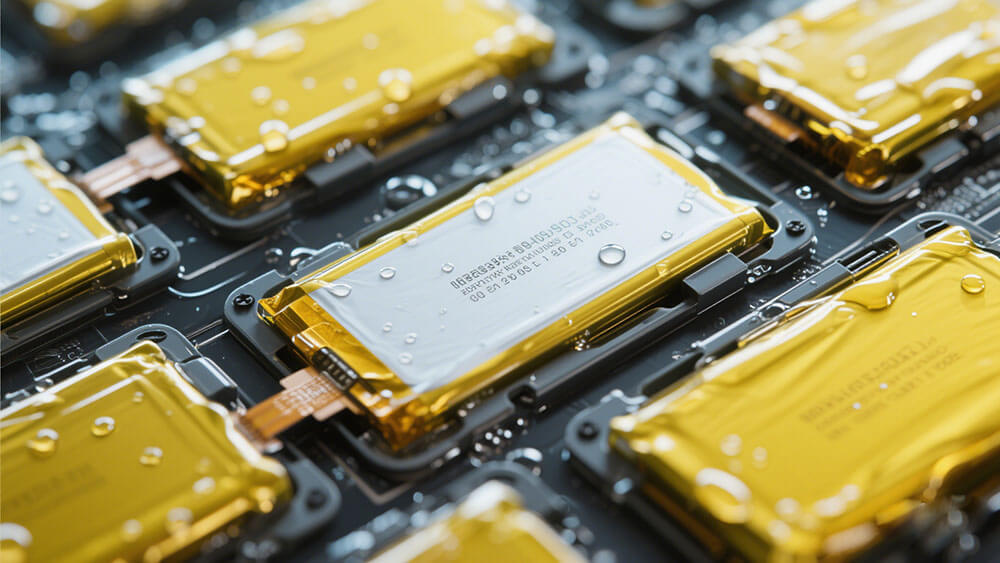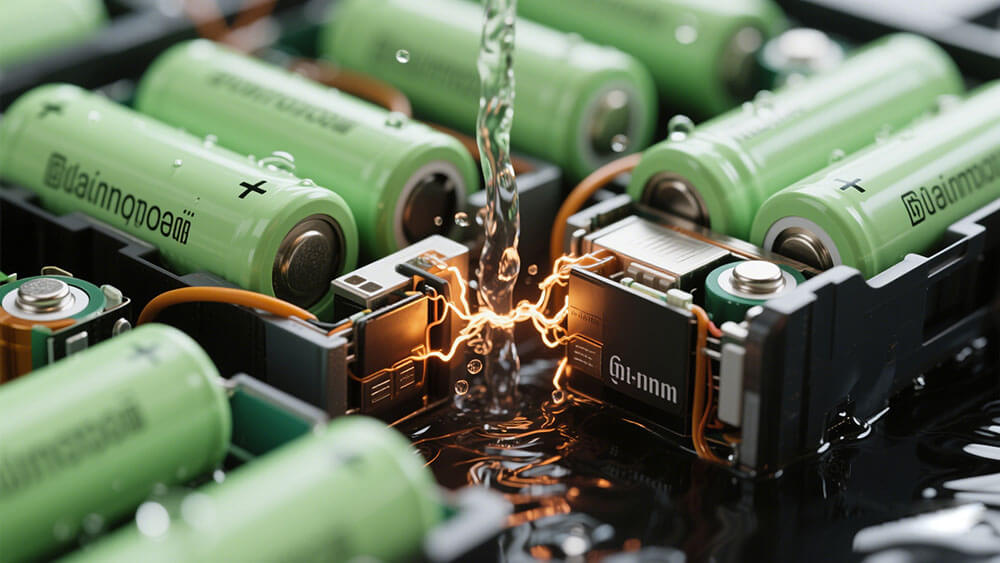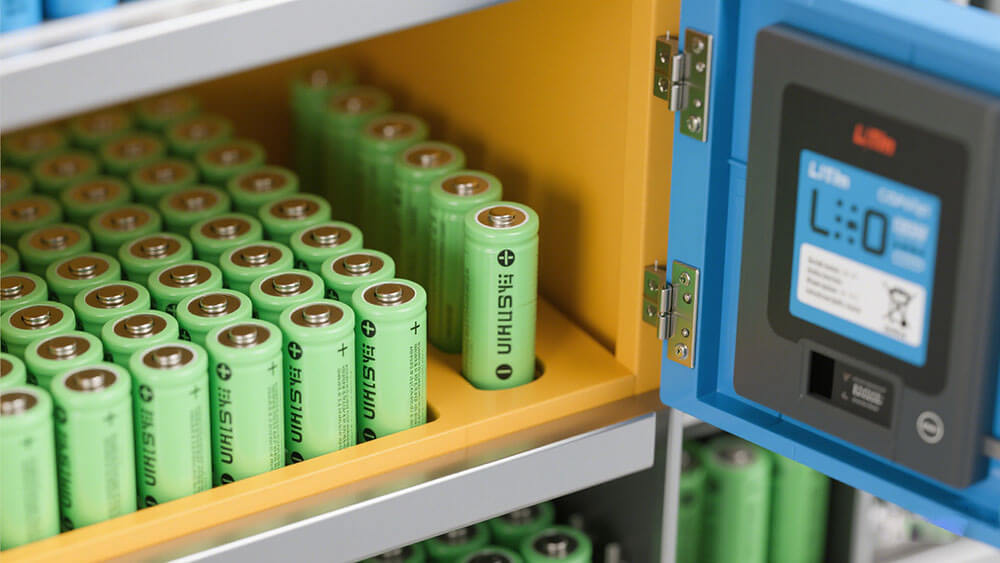Contents

Lithium battery protection from water damage is increasingly vital in 2025 as industries such as robotics and security systems grow more dependent on lithium batteries. Damaged batteries pose significant safety risks, including fires and reduced performance. With lithium production skyrocketing by 256%, implementing proactive lithium battery protection from water damage measures is essential to ensure safety while addressing environmental and public health concerns.
Key Takeaways
-
Keeping lithium batteries safe from water is very important. Apply special coatings to block water and pick batteries with strong water protection ratings.
-
Storing batteries the right way helps avoid water damage. Keep them in dry places with good airflow and away from very hot or cold spots.
-
Taking care of batteries often is essential. Check for leaks, clean them if they get wet, and charge them regularly to keep them working well.

Part 1: Why Lithium Batteries Are Vulnerable to Water Damage
1.1 Chemical Sensitivity of Lithium Batteries
Lithium batteries rely on intricate chemical reactions to store and release energy. These reactions occur within a sealed environment, where moisture can disrupt the delicate balance. Water exposure introduces impurities that compromise the electrolyte, leading to reduced conductivity and performance. Over time, this contamination accelerates the degradation of the battery’s internal components, rendering it damaged and unsafe for use.
The chemical sensitivity of lithium batteries makes them particularly vulnerable in industries like robotics and medical devices, where consistent performance is critical. Even minor water exposure can trigger irreversible damage, jeopardizing the reliability of these systems.
1.2 Structural Design Weaknesses
Lithium battery designs prioritize energy density and compactness, often at the expense of water resistance. For example, NMC batteries (160–270 Wh/kg) and LCO batteries (180–230 Wh/kg) feature lightweight casings that maximize energy storage but offer limited protection against water damage.
Hazard analyses and testing reveal several structural weaknesses:
-
High humidity accelerates corrosion of battery terminals.
-
Thin seals fail under prolonged exposure to moisture.
-
Safety features, such as venting mechanisms, become ineffective in harsh environments.
These vulnerabilities highlight the need for robust engineering solutions, especially in industrial and infrastructure applications where batteries face challenging conditions.
1.3 Common Causes of Water-Damaged Lithium-Ion Batteries
Water damage often results from preventable scenarios. Improper storage in humid environments ranks among the leading causes. Batteries left in areas prone to flooding or condensation are at high risk.
Another common issue is accidental water exposure during transportation or installation. For instance, batteries used in security systems or transportation infrastructure may encounter rain or leaks. Poor maintenance practices, such as failing to inspect seals and casings, further increase the likelihood of damage.
By understanding these causes, you can take proactive steps to protect lithium batteries and ensure their longevity in demanding applications.

Part 2: Immediate Risks of Water Exposure
2.1 Internal Short Circuits in Lithium Batteries
Water exposure can cause internal short circuits in lithium batteries, leading to immediate and severe consequences. When water infiltrates the battery casing, it interacts with the electrolyte, creating conductive pathways that bypass the intended circuit. This results in uncontrolled energy discharge, which can damage the battery’s internal components.
Short circuits often lead to overheating, which compromises the battery’s structural integrity. In industrial applications, such as robotics or transportation systems, this can disrupt operations and pose significant safety risks. You must ensure that lithium batteries remain sealed and protected from water to prevent these hazardous outcomes.
2.2 Fire Hazards and Thermal Runaway
Lithium batteries are highly reactive to water, making fire risks a critical concern. When water breaches the protective casing, it reacts with lithium to produce flammable hydrogen gas. This reaction can escalate into thermal runaway, where the battery’s temperature rises uncontrollably.
Thermal runaway incidents are particularly hazardous because water cannot extinguish lithium battery fires. Instead, it exacerbates the situation by fueling the fire. Statistics show that water-damaged lithium-ion batteries are a leading cause of fires in industrial and consumer applications. You should prioritize waterproofing measures to mitigate these risks and ensure operational safety.
2.3 Long-Term Damage to Water-Damaged Lithium-Ion Batteries
Even if immediate hazards are avoided, water damage can cause long-term degradation in lithium batteries. Prolonged exposure to moisture accelerates corrosion of internal components, leading to leaking and reduced performance. Damaged batteries often exhibit lower energy capacity and shorter lifespans, which can disrupt critical systems in medical devices or security systems.
Leaking batteries also pose environmental and safety concerns, as they release hazardous chemicals. Proper maintenance and storage practices are essential to prevent water damage and extend the lifespan of lithium batteries. By addressing these risks proactively, you can avoid costly replacements and ensure reliable performance in demanding applications.

Part 3: Preventing Water Damage to Lithium Batteries
3.1 Effective Waterproofing for Lithium Battery Protection
Waterproofing is one of the most reliable protective measures for lithium batteries. Encapsulating or coating battery components with waterproof materials prevents water infiltration. Sealants, such as silicone-based or epoxy adhesives, effectively block moisture from entering seams and joints. You can also enhance protection by using shrink-wrapping or additional packaging layers.
When selecting batteries for industrial or medical applications, prioritize those with high IP ratings, such as IP67 or IP68. These ratings indicate superior resistance to water and dust. Waterproof rubber strips or cases can further safeguard batteries used in wet environments. For example, infrastructure projects often rely on these solutions to protect batteries from rain or flooding.
Investing in waterproofing techniques ensures lithium battery safety and extends their lifespan. By implementing some strategies from Large Power, you can minimize risks and maintain operational efficiency.
3.2 Best Storage Practices for Lithium Batteries
Proper storage plays a critical role in preventing water damage. Always store lithium batteries in well-ventilated areas away from water sources. Avoid placing them near heat or direct sunlight, as extreme temperatures can compromise their integrity. Wrapping batteries during transportation provides additional protection against accidental exposure.
For long-term storage, maintain a stable environment with temperatures between 15°C and 25°C. Periodically inspect batteries for signs of leakage or damage. If you notice any abnormalities, isolate and store damaged batteries separately to prevent further issues. These best practices for battery safety ensure reliability in demanding applications like robotics and security systems.
3.3 Maintenance Tips to Avoid Water Damage
Regular maintenance is essential for protecting lithium batteries from water damage. Clean and dry devices immediately after exposure to moisture. Monitor batteries for signs of leakage, such as corrosion or unusual swelling. If you detect any issues, stop using the battery and consult a certified technician.
Charge batteries to approximately 50% capacity before storage and recharge them every six months to maintain performance. Avoid exposing batteries to excessive shock or vibration, as this can weaken their protective casings. By following these maintenance tips, you can enhance lithium battery safety and ensure their longevity in critical applications.
Protecting lithium batteries from water damage is essential for ensuring safety and performance in 2025. Preventive measures like waterproofing, proper storage, and regular maintenance significantly reduce risks. Emergency steps, such as safe handling and proper disposal of damaged batteries, further enhance safety.
Organizations implementing these strategies see notable improvements in battery safety and longevity. For instance, 55% of organizations conduct regular inspections, while 53% follow proper storage practices. These efforts highlight the importance of proactive measures.
Battery management systems also play a critical role by preventing thermal runaway and extending battery life. You can ensure reliability by adopting these strategies and staying informed about advancements in lithium battery technology form Large Power.
FAQ
1. What should you do if a lithium battery gets wet?
Immediately remove the battery from the water. Dry it thoroughly and inspect for visible damage. If damaged, consult a professional or dispose of it safely.
2. Can a damaged lithium battery still be used?
No, using a damaged lithium battery poses safety risks, including fire hazards. Replace it immediately to ensure safety and maintain operational efficiency.
3. How can you identify a damaged lithium battery?
Look for signs like swelling, discoloration, or leakage. Damaged batteries may also exhibit reduced performance or overheating during use.
Tip: For professional guidance on lithium battery safety and disposal, visit Large Power.





